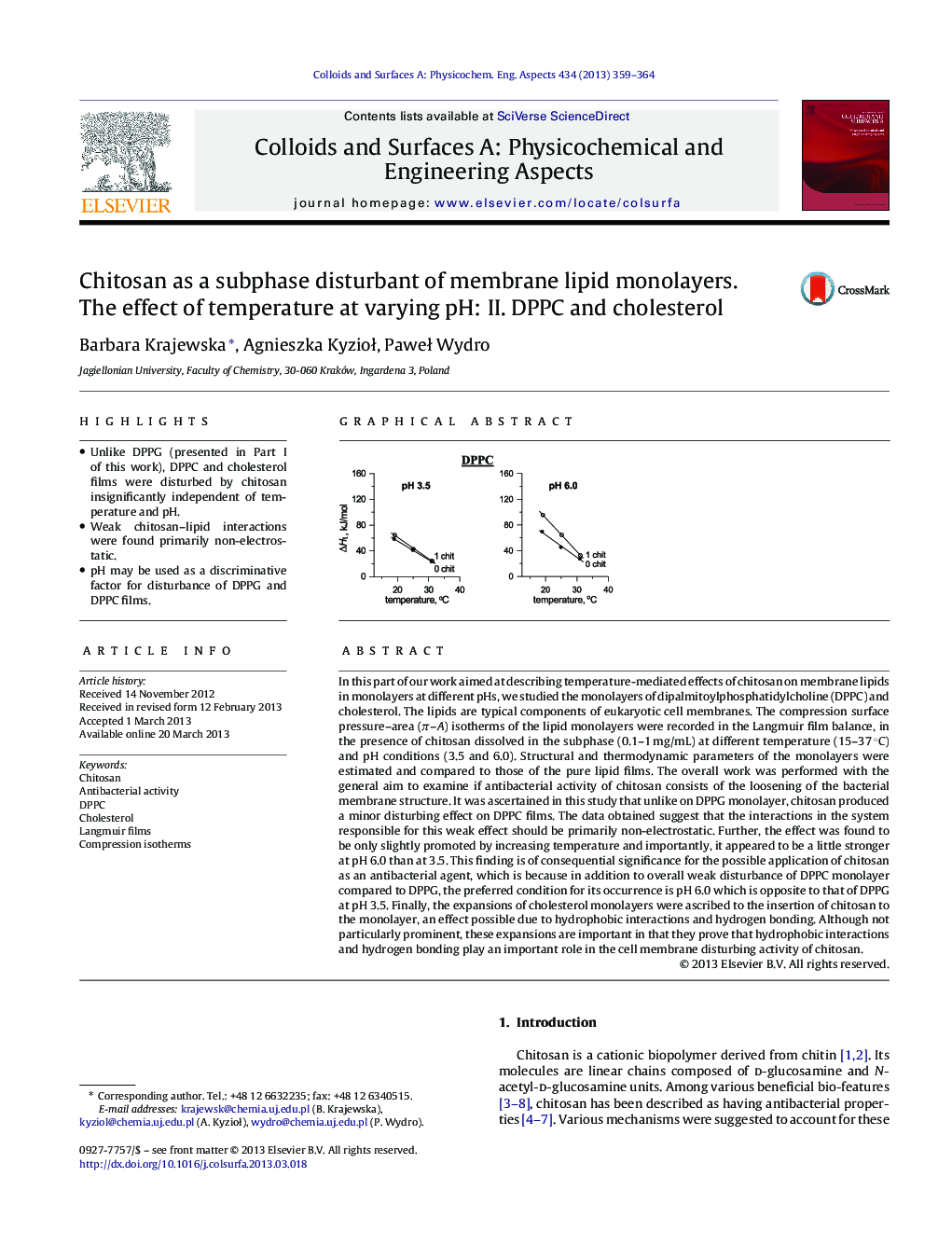| Article ID | Journal | Published Year | Pages | File Type |
|---|---|---|---|---|
| 593462 | Colloids and Surfaces A: Physicochemical and Engineering Aspects | 2013 | 6 Pages |
•Unlike DPPG (presented in Part I of this work), DPPC and cholesterol films were disturbed by chitosan insignificantly independent of temperature and pH.•Weak chitosan–lipid interactions were found primarily non-electrostatic.•pH may be used as a discriminative factor for disturbance of DPPG and DPPC films.
In this part of our work aimed at describing temperature-mediated effects of chitosan on membrane lipids in monolayers at different pHs, we studied the monolayers of dipalmitoylphosphatidylcholine (DPPC) and cholesterol. The lipids are typical components of eukaryotic cell membranes. The compression surface pressure–area (π–A) isotherms of the lipid monolayers were recorded in the Langmuir film balance, in the presence of chitosan dissolved in the subphase (0.1–1 mg/mL) at different temperature (15–37 °C) and pH conditions (3.5 and 6.0). Structural and thermodynamic parameters of the monolayers were estimated and compared to those of the pure lipid films. The overall work was performed with the general aim to examine if antibacterial activity of chitosan consists of the loosening of the bacterial membrane structure. It was ascertained in this study that unlike on DPPG monolayer, chitosan produced a minor disturbing effect on DPPC films. The data obtained suggest that the interactions in the system responsible for this weak effect should be primarily non-electrostatic. Further, the effect was found to be only slightly promoted by increasing temperature and importantly, it appeared to be a little stronger at pH 6.0 than at 3.5. This finding is of consequential significance for the possible application of chitosan as an antibacterial agent, which is because in addition to overall weak disturbance of DPPC monolayer compared to DPPG, the preferred condition for its occurrence is pH 6.0 which is opposite to that of DPPG at pH 3.5. Finally, the expansions of cholesterol monolayers were ascribed to the insertion of chitosan to the monolayer, an effect possible due to hydrophobic interactions and hydrogen bonding. Although not particularly prominent, these expansions are important in that they prove that hydrophobic interactions and hydrogen bonding play an important role in the cell membrane disturbing activity of chitosan.
Graphical abstractFigure optionsDownload full-size imageDownload as PowerPoint slide
